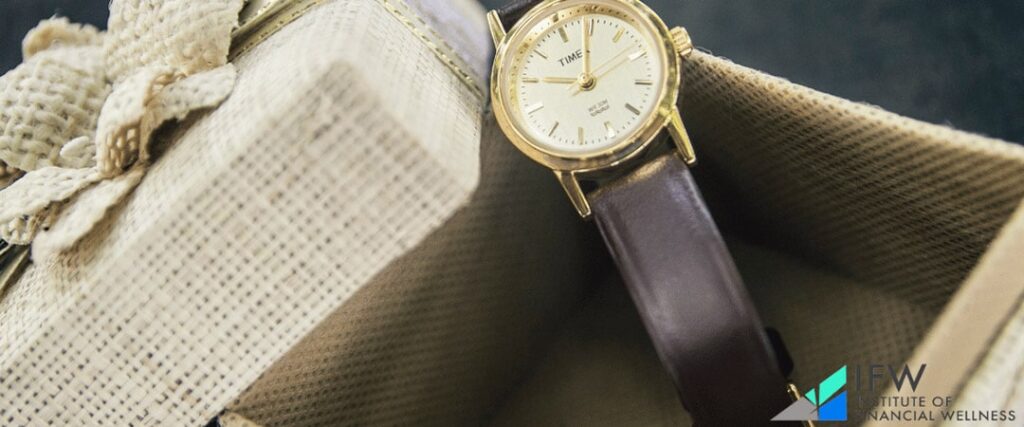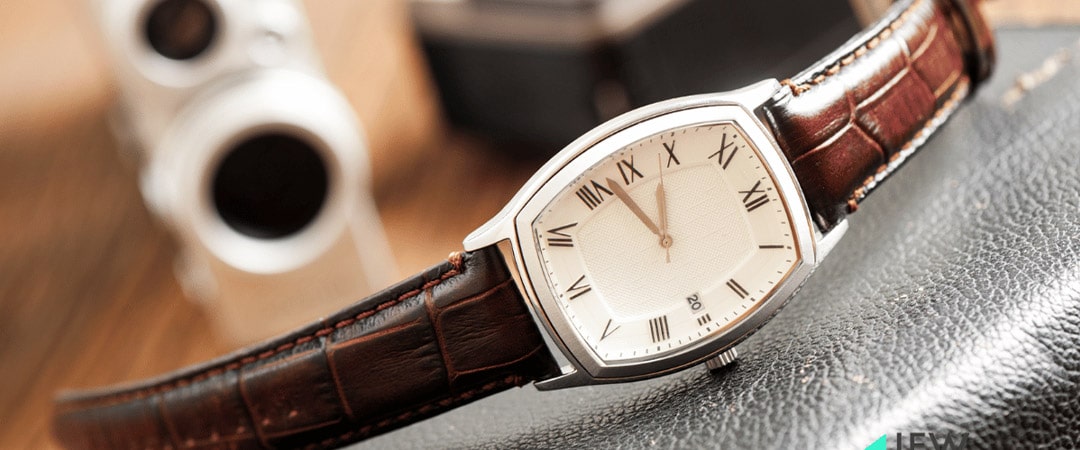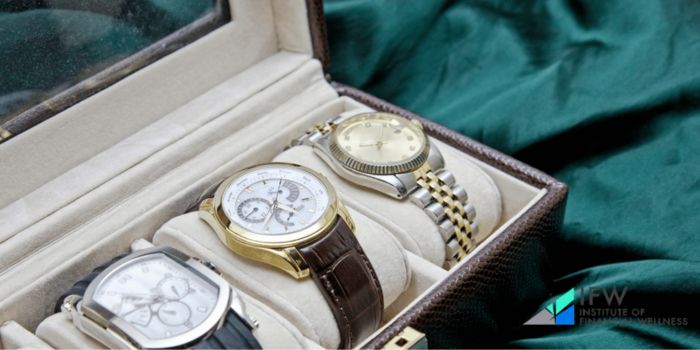“In investing, what is comfortable is rarely profitable.” – Robert Arnott
Are you considering the possibility of investing in watches as a physical asset that can increase in value? The endeavor isn’t solely focused on opulence. It encompasses shrewd purchasing, understanding the nuances of the watch market, and impeccable timing. Buckle up, and let’s unveil the complexities inherent within the realm of timepieces, provide insights on discerning watches with investment potential, and offer practical guidance to formulate an investment and retirement plan tailored to your economic ambitions. Regardless if you’re just starting out or are a seasoned enthusiast, this resource is designed to arm you with fundamental tools for assembling a prized collection of watches.
And don’t forget to check out your Retirement Score for free and better understand your status, as well as how your investments can set you up for retirement!
Key Takeaways
- Luxury watches from prestigious brands like Rolex and Patek Philippe can serve as a resilient investment, appreciating over time due to factors such as brand reputation, scarcity, and historical significance.
- Investing in luxury watches requires a strategic approach, including setting clear goals, budgeting wisely, understanding market dynamics, and choosing investment-grade timepieces for potential capital appreciation.
- Diversification within a watch portfolio, proper care and storage, timing the market, and leveraging relationships with other collectors and auctions are advanced strategies that can help enhance the value of watch investments.
Decoding the Luxury Watch Investment Landscape
In the echelons of high-value assets, luxury watches stand as a testament to both aesthetic grandeur and financial acumen. The luxury watch market, a colossal $75 billion industry, commands the attention of investors worldwide. Renowned for their resilience and growth, luxury watch brands like Rolex, Patek Philippe, and Audemars Piguet have consistently outshone other asset classes, solidifying their position as more than just high-end accessories. Indeed, these timepieces are investments par excellence, combining the tangible pleasure of ownership with the thrill of potential capital appreciation.
The current period offers an ideal opportunity for those interested in exploring the luxury watch investment landscape. Investment specialists recognize the potential of luxury watches to bolster a diversified portfolio, providing a haven less susceptible to the whims of volatile markets. With factors such as brand reputation, historical significance, and mechanical innovation serving as cornerstones of their investment potential, luxury watches are becoming as coveted as fine art or vintage automobiles for their ability to accrue value over time [1]. In the forthcoming sections, we’ll unravel the intricate details that make luxury watches an attractive investment option.
Understanding Watch Market Dynamics
The luxury watch market is a complex tapestry, woven with threads of scarcity, consumer demand, and global circumstances, each contributing to the fluctuating tapestry of valuations. Rare models and limited editions, often available only to privileged few, become the trophies of the watch world, with their value inflating in response to their unattainability. The appetite of collectors and aficionados steers the market, with certain timepieces ascending to cult status, driven by their popularity and the scarcity that fuels them.
However, it is not just enthusiasts shaping the market; global events, including pandemics and geopolitical conflicts, can unsettle the status quo, creating ripples that may present unique investment opportunities. Auction results, too, serve as a barometer for the watch industry, providing benchmarks and revealing the investment potential of distinctive models. Successfully navigating this constantly changing landscape requires both understanding and anticipation, laying the foundation for a successful investment that can also help you diversify your portfolio.
Identifying Investment-Grade Watches

In the realm of investment-grade watches, certain names and models echo the promise of a wise investment. The Rolex Submariner and the Patek Philippe Nautilus, for instance, are cited as prime examples of timepieces whose value is not only retained but often multiplied over time. Brand prestige, scarcity, historical significance, and mechanical complexity coalesce to elevate a luxury watch to the coveted status of ‘investment-grade.’ A watch’s provenance, the narrative of its journey through time, can significantly enhance its desirability and, consequently, its value.
An astute investor understands that the condition of an investment watch is of utmost importance. A well-preserved timepiece boasting its original parts and maintaining accuracy is a beacon for collectors and a likely candidate for appreciation [2]. From the steel-clad resilience of Rolexes to the refined elegance of an Audemars Piguet Royal Oak, the criteria for identifying a watch worthy of investment are as nuanced as the mechanisms ticking within their cases.
Crafting Your Watch Investment Strategy
Embarking on a watch investment journey requires more than an appreciation for luxury—it demands a strategic blueprint to navigate this intricate market. A successful watch investment strategy hinges on the ability to set clear, long-term goals, allocate the budget wisely, and diversify across different watch categories to mitigate risks. This approach balances the pursuit of returns with the safeguarding of capital, ensuring that the collection is not only a source of pride but also watches a good investment as a sound financial asset.
However, the path of watch investment is not without its pitfalls. The liquidity of luxury watches can vary, and there may be times when selling at the desired price proves challenging. Given this, investors should focus on acquiring models that are undervalued or on the cusp of popularity, potentially yielding higher returns as market sentiment shifts. Diversification, a cornerstone of any robust investment strategy, can provide a buffer against the whims of individual companies or styles, leading to increased risk-adjusted returns.
Setting Investment Goals
The journey toward watch investment success begins with goal-setting. SMART investment goals—Specific, Measurable, Achievable, Realistic, and Time-based—provide the scaffolding for a focused and attainable investment strategy. Defining financial objectives such as growth, preservation, or lifestyle enhancement is critical in crafting a personalized investment approach that resonates with individual aspirations. Whether the goal is to assemble a collection that rivals a museum’s exhibit or to secure a nest egg for future generations, a written plan encourages action and maintains focus.
The resilience of luxury watches, as demonstrated during the Great Recession, underscores the importance of setting both short-term and long-term objectives. These fine timepieces rebounded within two years after the 2008 market crash, outperforming the S&P 500 and proving their mettle as a formidable investment class. Regular review and assessment of investment performance ensure that strategies align with the set goals and are adaptable to market fluctuations.
Allocating Budget Wisely
Allocating your budget with wisdom in the world of watches is akin to selecting the perfect timepiece for a black tie gala—both require a discerning eye for value. Entry-level Swiss mechanical watches, for instance, begin at $1,000, while mid-range offerings can escalate to $10,000, presenting a spectrum of options for investors of varying budgets. Yet, it is not merely about the price tag; the watch’s quality, potential for appreciation, and the brand’s legacy are the true arbiters of a smart choice.
The shrewd investor looks beyond the immediate allure of luxury brands, seeking opportunities in undervalued or soon-to-be-discontinued models that promise significant value increases. And let’s not forget the hidden costs—maintenance and servicing are part and parcel of the luxury watch ownership experience, necessitating inclusion in the initial budget to avoid future financial surprises.
With a budget that fits your financial situation and a keen eye for potential value, acquiring your first investment timepiece becomes a plausible goal and a good investment.
Acquiring Your First Investment Timepiece

The quest for your inaugural investment timepiece is a thrilling venture that demands careful contemplation. As you immerse yourself in the pre-owned luxury watch market, an understanding of brands like Omega, Rolex, and Audemars Piguet becomes paramount. Evaluating a prospective investment watch requires a meticulous examination of its brand reputation, rarity, condition, and market demand, as well as an awareness of market trends and personal taste.
Strategic acquisition begins with selecting brands that have a track record of holding value, such as Rolex and Patek Philippe, and gravitating towards discontinued models or limited edition pieces due to their scarcity and desirability. While excellent starter watches can be found within the $10k – $15k range, it’s critical to educate oneself about the watch’s history and movements and to verify the credibility of the seller, whether you’re purchasing online or in-store.
With thorough research and an attentive eye, your list of potential investment watches will seamlessly align with your investment goals and the timeless charm of these mechanical wonders.
Selecting the Right Watch Brand

Choosing the right watch brand for investment is a decision that resonates with the sophistication of playing the stock market. Established brands like Rolex, Patek Philippe, and Audemars Piguet have a rich history of their watches appreciating over time, revealing the worthiness of their timepieces as investments. Specific models, such as the Audemars Piguet Royal Oak or the Rolex Submariner, are particularly renowned for their impressive resale values, underlining the importance of selecting the right watch brand.
Limited edition or low-production models leverage the power of scarcity, often becoming excellent investment choices due to steady demand and potential for value appreciation. When selecting a watch brand, the investor should weigh the brand’s overall reputation against the individual model’s design, features, and production run size, which collectively forecast the watch’s potential for appreciation. This blend of discernment and strategy is the cornerstone of selecting a brand that will not only adorn your wrist with elegance but also bolster your financial portfolio.
Where to Buy Watches
The quest for your next watch investment transcends mere acquisition; it’s about securing a piece of horological history. The burgeoning luxury watch market, accounting for 30% of a $75 billion industry in pre-owned sales, offers fertile ground for rare and discontinued timepieces, including pre-owned watches [3]. It’s a buyers’ market, teeming with potential advantages for the astute investor. To ensure the authenticity and condition of your investment, it is crucial to patronize reputable retailers, with companies like Jomashop and the European Watch Company standing out for their commitment to quality.
The transparency and authentication services these retailers offer give buyers the necessary confidence, highlighting the importance of original documentation and packaging in preserving a watch’s value. However, navigating the secondhand luxury watch market without an understanding of its dynamics can lead to cost implications—high-demand models such as Rolex watches often sell at a premium due to their scarcity and immediate availability. Armed with knowledge and discernment, the pursuit of your first investment timepiece, like a Rolex watch, becomes an adventure with the promise of a rewarding conclusion.
Maintaining and Enhancing the Value of Your Watch Portfolio
The acquisition of a luxury timepiece is but the beginning of a journey. To maintain and enhance the value of your watch portfolio, it is imperative to embrace a regimen of proper care, storage, and market timing. These practices ensure that your collection not only retains but potentially increases its value over time. As portable assets with the potential for appreciation, luxury watches warrant the same level of attention and strategy as any other high-value investment.
The condition of a luxury watch is a critical element that influences its resale value. Here are some steps you can take to protect and maintain your watch:
- Keep it away from the ravages of humidity, dust, and sunlight.
- Ensure your watch to safeguard your investment against theft and other unforeseen events.
- Regularly maintain your watch by professionals to ensure it operates correctly and continues to be a worthy investment.
Through careful maintenance and strategic market timing, your watch portfolio can serve as a source of personal pleasure and financial gains that can help you retire comfortably.
Proper Care and Storage
The longevity of a luxury watch’s value is inextricably linked to its upkeep. Regular servicing by authorized professionals is not just a recommendation—it’s an investment in the watch’s future value. The exquisite craftsmanship of a luxury timepiece deserves meticulous care, with its condition being a crucial factor in maintaining its resale value. Ensuring that the watch remains in pristine condition, ideally unworn, with complete documentation and authentic parts, is central to preserving its value as an investment.
Appropriate storage is key to protecting your investment. Here are some tips for storing your watches:
- Keep them in a temperature-controlled environment, away from the damaging effects of sunlight.
- Store them face up in a watch box, roll, or drawer to protect them from unnecessary wear.
- Make sure their beauty and precision remain unscathed by the passage of time.
Timing the Market
In the world of investment watches, timing is everything—not just within the mechanics of the watch itself but also in the market. Keen awareness of market trends and the ability to time sales during periods of high demand or limited supply can significantly amplify profits. The Great Recession offered a stark reminder of the resilience of luxury watches, with many rebounding faster than traditional markets, suggesting that strategic timing can lead to advantageous selling periods.
Continual market monitoring, post-purchase, is essential for understanding the price trajectory of an investment watch and pinpointing those optimal moments for sale. While rare and well-maintained watches are more likely to appreciate, the liquidity of luxury watches can be unpredictable at times, presenting challenges in selling at the preferred price or with haste when necessary. Nevertheless, with a diligent approach to market timing, the returns on a luxury watch investment can be both significant and satisfying.
Diversifying Within the Watch Investment Sphere
If you’re looking into getting involved in the realm of watch investment, diversification isn’t just a strategy—it’s an art that melds enthusiasm with caution. By exploring different watch categories and considering the works of independent watchmakers, investors can create a portfolio that is both aesthetically diverse and robust against market fluctuations. An eclectic collection that spans brands, styles, and eras not only satiates the collector’s thirst for variety but also minimizes risks, ensuring that shifts in a specific market segment don’t unduly impact the overall investment.
Watches that are no longer in production, making up 95% of the market, often appreciate in value due to their scarcity [4]. Investing in such pieces, and in those that have the potential to become future classics, can fortify a collection against the ebb and flow of contemporary trends. Moreover, limited edition watches and brand collaborations infuse a collection with uniqueness, a key ingredient for investment potential.
Yet, while diversification is strategic, it should also reflect personal interests, allowing the collection to resonate with the collector’s unique perspective and investment acumen.
Exploring Different Watch Categories
The path to a diversified watch portfolio is paved with a variety of timepieces, each category offering its own charm and investment potential. Sports watches, with their rugged appeal, dress watches exuding elegance, and vintage watches that carry whispers of the past, all contribute to a rich collecting experience. Watches like the GMT Master II and the Patek Philippe Nautilus, now discontinued, become more valuable with time, their absence from production lines creating a surge in demand and elevating their status as collectibles.
Vintage watches, while emotionally rewarding, require careful selection, balancing their historical allure with considerations such as:
- maintenance costs
- mechanical integrity
- if it holds its original bracelet.
Diversifying a watch portfolio isn’t just about spreading risk; it’s about indulging in the research, discovery, and joy that comes with each watch category, enriching the collector’s experience and potentially the portfolio’s returns.
Considering Independent Watchmakers
Venturing beyond mainstream luxury brands to the ateliers of independent watchmakers can reveal a world of exclusivity and potential. Timepieces crafted by the hands of artisans like Philippe Dufour and F.P. Journe, produced in limited numbers, offer a unique investment proposition due to their scarcity and the craftsmanship they embody. Brands such as Richard Mille have captured the imagination of the market, their surge in popularity a testament to their burgeoning status in the investment landscape.
The creations of independent watchmakers are often the result of innovative design and mechanical mastery, coveted by collectors and investors alike for their uniqueness. Including these watches in an investment portfolio can introduce a different set of market dynamics, providing a hedge against the fluctuations associated with larger, more established luxury brands. For the astute investor, the distinctiveness of independent watchmakers’ offerings can not only enhance the diversity of a collection, but also its potential for appreciation.
Advanced Tactics for Seasoned Watch Investors

For experienced watch investors, advanced tactics serve as refined instruments that unearth opportunities within the luxury watch market. Leveraging the competitive edge of auction participation and the camaraderie of networking with other collectors can unlock access to rare finds, valuable market insights, and preferable deals. These sophisticated strategies can elevate a collection from impressive to extraordinary, ensuring each piece stands out as both a statement of personal taste and a shrewd financial investment.
Auctions can be a battleground where the rarest and most unique timepieces are contested and where seasoned investors can flex their expertise to secure watches that are not just timekeepers but pieces of history. Networking, on the other hand, creates a web of shared knowledge and opportunities, enabling investors to tap into the wisdom of the collector community for insights into rare models, market trends, and trusted dealers.
These advanced tactics go beyond acquiring assets; they are about establishing a lasting legacy of watchmaking excellence.
Empowering Your Financial Journey: The Institute of Financial Wellness (IFW) – Your Trusted Guide to Luxury Watch Investment
When navigating the intricate world of luxury watch investment, having access to knowledgeable resources is paramount. The Institute of Financial Wellness (IFW) serves as a guiding light in financial education, providing resources, such as webinars on demand and services that equip individuals with the knowledge to make well-informed decisions and devise effective solutions tailored to their unique needs. The IFW prides itself on delivering engaging and objective content, ensuring that individuals have the clarity and confidence needed to navigate their financial journey.
With a diverse offering that includes:
- webinars
- financial check-ups
- retirement roadmaps
- insurance education
The IFW serves as a comprehensive guide whether you’re starting your investment journey or looking to refine your strategies. The institute’s commitment to unbiased, fact-based information and its network of respected financial professionals ensures that investors have access to the tools and knowledge necessary to maximize their financial well-being and, ultimately, ‘Get There.’
Full Summary
As we draw the curtains on this exploration of luxury watch investing, it’s clear that this pursuit is more than just a passion—it’s a sophisticated financial strategy. From understanding the dynamics of the luxury watch market to setting SMART investment goals, allocating budget wisely, and selecting the right timepiece, the journey to horological investment success is multifaceted. Maintaining and enhancing the value of your collection through proper care, storage, and market timing, along with diversifying across categories and independent watchmakers, solidifies your investment’s potential.
Remember that the world of luxury watch investment is one of endless discovery and opportunity. Whether you’re attending auctions, networking with collectors, or seeking guidance from resources like the IFW, each step is a tick towards financial prosperity and the enjoyment of these timeless treasures. Let the tick of your investment watches be a reminder of the legacy you are building—one that marries the elegance of craftsmanship with the precision of financial growth.
Frequently Asked Questions
Are watches a good investment?
Absolutely, timepieces crafted by high-end luxury brands, particularly those priced at $15,000 or above, are frequently regarded as solid investments due to their ability to maintain value.
For certain individuals seeking investment opportunities, these watches can represent a sensible choice.
What is the best watch to invest in?
Think about acquiring a Rolex Submariner. This timeless and emblematic watch has maintained its value excellently over the years and is in great demand. Prestigious manufacturers such as Rolex, Patek Philippe, and Audemars Piguet are renowned for crafting timepieces that typically rise in value owing to their exclusivity, esteemed status, and superior craftsmanship.
Can you invest in Rolex?
Absolutely, Rolex watches are viewed as a dependable asset because of their consistent track record in maintaining and potentially appreciating value over the years.
One should give thought to acquiring both contemporary and vintage models. The latter tend to be a more favorable choice for investment purposes due to their enduring charm amongst collectors.
What makes luxury watches a good investment?
Purchasing luxury watches may serve as a prudent investment due to the esteemed reputation of their brands, notable historical importance, advancements in mechanics, and limited availability. These factors can lead to an increase in value over time, positioning them as a valuable component within a varied investment portfolio.
How do I begin investing in luxury watches?
Initiate your foray into the realm of luxury watch investment by conducting thorough market research and comprehending the importance of diverse brands and timepiece variants. Take into account aspects such as scarcity, condition, and consumer demand. Establish a financial plan that includes upkeep expenses while concentrating on brands like Rolex and Patek Philippe that have a reputation for retaining value.




